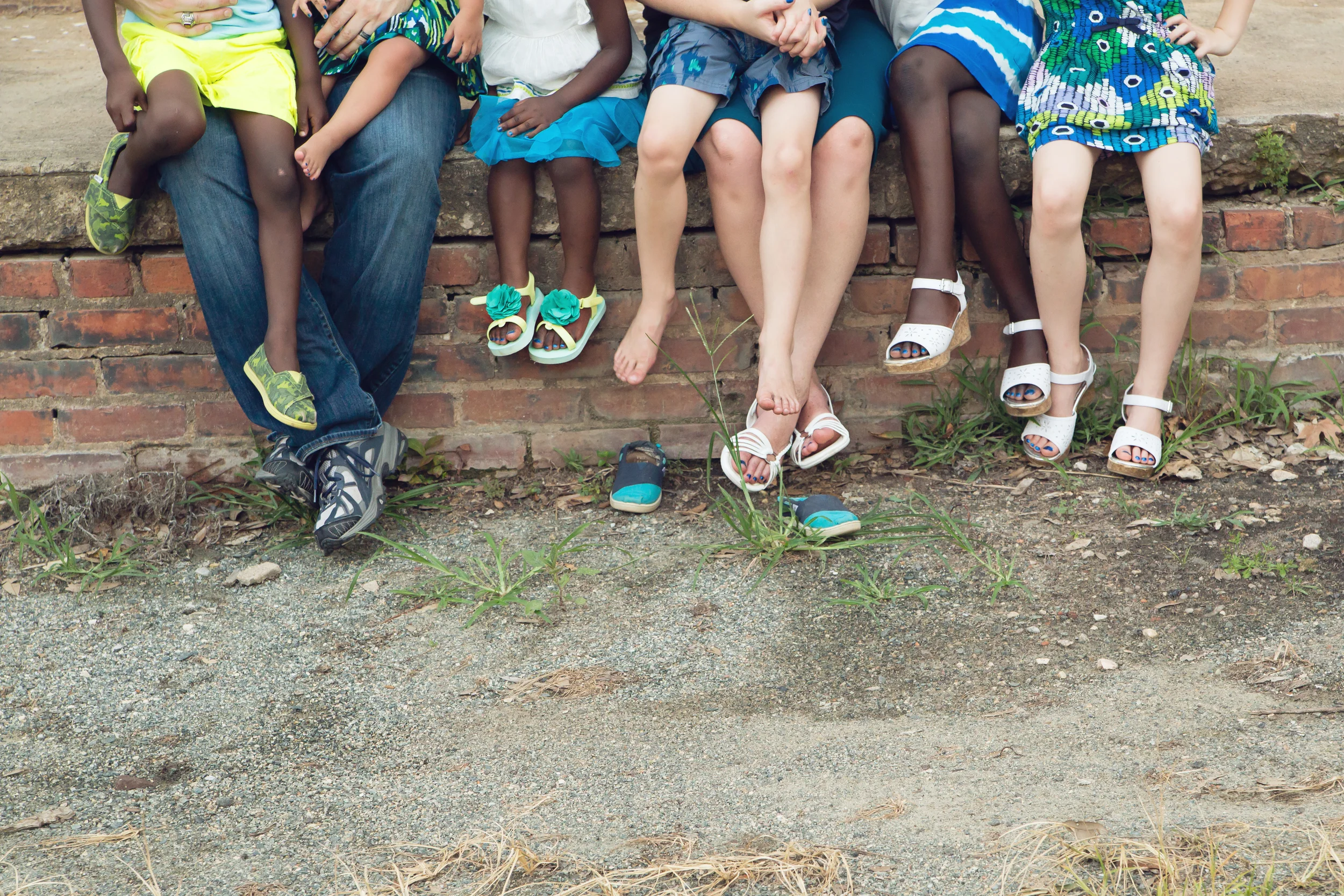I do realize that some of you are thinking, "Hmm, I wonder what Shannon has to say about this?" while most of you are wondering, "What's artificial twinning?" So let's start with some definitions.
(Side note: there's some creepy animal husbandry term "artificial twinning" that has to do with in-vitro cloning or some such tomfoolery. Let's be clear that I'm not talking about that, okay?)
I've seen artificial twinning in adoption described several different ways. One of the most common definitions doesn't match us: adopting two babies who are less than nine months apart. (I do have a friend who did that, though, and all is well.) Another does match us: adopting a child who is within six months of age of another child in the family.
Yep, that's us times three.
(Side note: We are keeping the given names for all three children, but we're not publishing those names to the blog until they are legally ours. All their names begin with P, so we'll refer to them by P1, P2, and P3. In person and on Facebook, we're using their real names.)
Jocelyn is six. P1 is six. Technically, Jocelyn is older... but only by five days. So, yes, we're pseudo-twinning our oldest two.
Robbie is four. P2 is four. Technically, P2 is older... but they'll most likely enter kindergarten together. So, yep, we're twinning again.
Zoe is 18 months. P3 just turned 2. Technically, they meet the criteria for twinning because they're within six months of each other... but Zoe's physical differences, plus their spacing that will put P3 in kindergarten a year before Zoe, make this the least twin-like pairing.
(Side note: please, please, please, please, please don't refer to any of the pairings as "twins." I'm using that word for obvious reasons in this post, but I won't anywhere else. They each have had separate non-twin identities for their entire lives until now, and our adjustment will be smoothest if everyone - including us - keeps in mind that each child is a unique individual and not a packaged pair.)
What's the big deal about creating virtual twins through adoption?
Competition is one, as kids are more apt to compete in achieving in school, in sharing friends, and in receiving parental affection and attention. When kids are older when they're "twinned," this can be more acute, because two kids who didn't have a true twin from birth are all of a sudden in that sort of relationship. Experts say this can be more problematic in same-gender artificial twins... which is what all three of our pairs will be.
Why is competition a big deal when non-twinned siblings often compete too? Well, keep in mind that adoption doesn't guarantee an immediate bond between parent and child. That happened within days with us and Zoe, but she had less trauma and was younger than our newest three will be. When P1 and Jocelyn compete in the early days as a family, our bond with Jocelyn will probably be stronger, and we'll have to fight the temptation to side with her.
If you're a mom, you know the feeling when your kid and another kid are fighting and you turn all Mama Bear, protecting your child... when this happens with Jocelyn and P1 early on, my inclination may be to rush to Jocelyn's side because I will have a stronger mother-daughter bond with Jocelyn than I do initially with P1. (Please join us in praying for those bonds to develop quickly and strongly!)
Another concern is comparisons. Kids may compare each other, favorably or unfavorably, while parents and other adults might do so as well. I don't doubt that this will happen. I just don't think it
has to be a bad thing... or that comparisons wouldn't happen among kids, no matter their age spread.
We've at times drawn comparisons among Jocelyn, Robbie, and Zoe. It happens.
Overall, I do expect twinning to be a challenging aspect of this adoption. It's one I've discussed with our agency director, our home study social worker, and other families who have twinned before. We're not taking this lightly.
Consider this example, using our two oldest ones: we'll be simultaneously parenting two girls who are nearly the same age (Jocelyn and P1) but who are coming from vastly different experiences in the first 6+ years of life. One has always been in a stable two-parent household and has always had all of her needs met, as well as many wants indulged, while the other... well, hasn't. It won't be easy.
Side note: Okay, I don't really have a side note to insert here, but since I was a little side-note happy at the beginning of this post, I felt like it was time to add another. Moving on...
Obviously, we've decided it's worth the challenge.
Why?
Well, this quote from
an article in the New York Times puts it well:
"Adoption should be about finding families for children, not about finding children for families,” [Joyce Maguire Pavao, the chief executive and founder of the Center for Family Connections in Cambridge, Mass.] said. “In many cases parents are doing this without understanding what the ramifications are. I think it’s fine to do it if people are well aware that doing it may be very difficult."
Our aim in adoption isn't about finding children for our family. It's about being a family for a child (or, in this case, for three children).
That's why, when presented with the needs of our three Ps, we said yes, knowing that we'd be venturing into the realm of artificial twinning.
We're a family. They needed a family. That's good enough for me.












